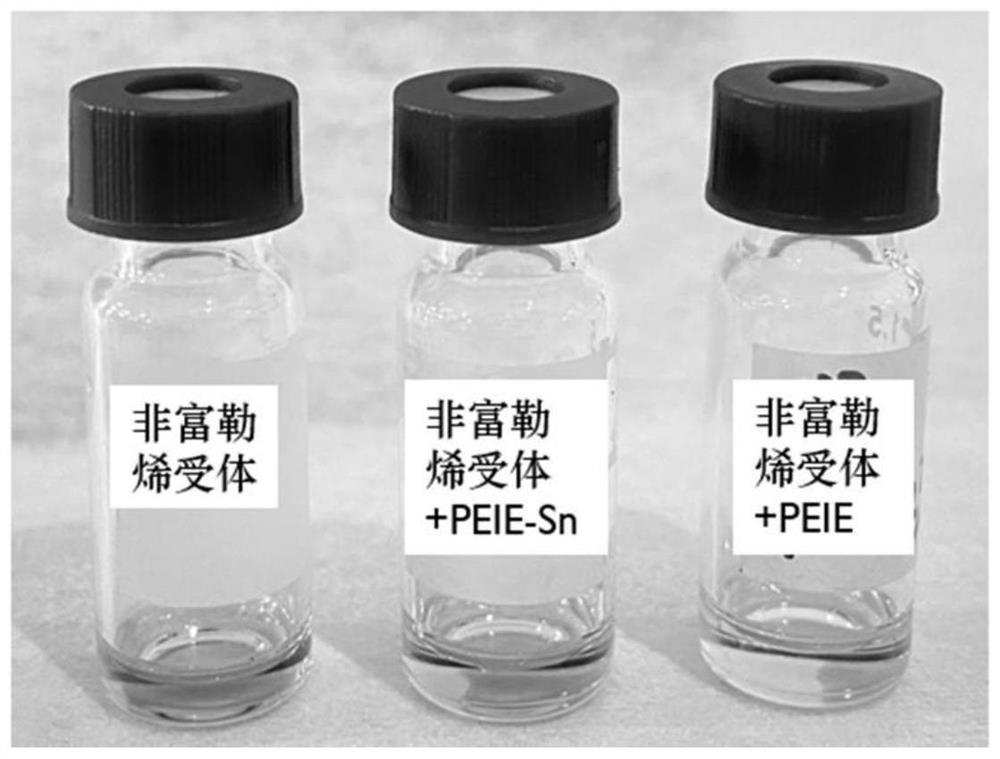Organic photoelectric detector based on organic-metal ion chelating electron transport layer
An electron transport layer and photodetector technology, applied in the direction of electric solid devices, circuits, electrical components, etc., can solve the problem of reducing the photocurrent density and electron mobility, limiting the application of organic photodetectors, and uneven surface of the electron transport layer, etc. problems, to achieve the effect of reducing interface defects, good air stability, and high mechanical flexibility
- Summary
- Abstract
- Description
- Claims
- Application Information
AI Technical Summary
Problems solved by technology
Method used
Image
Examples
Embodiment 1
[0036] This embodiment proposes an organic photodetector based on an organic-metal ion chelating electron transport layer, with a structure such as figure 1 As shown, it includes a substrate 1 , a conductive cathode 2 , an electron transport layer 3 , a photoactive layer 4 , a hole transport layer 5 and a metal anode 6 sequentially arranged from bottom to top.
[0037] This embodiment also proposes a method for preparing the above-mentioned organic photodetector, comprising the following steps:
[0038] Step 1: Using ITO as the substrate composed of the substrate 1 and the conductive cathode 2, the substrate is sequentially cleaned, dried with nitrogen and cleaned with ultraviolet light;
[0039] Step 2: mix 0.3wt% PEIE solution with 15mg / ml (Sn(CH 3 COO) 2 4H 2 The O solution was mixed according to a volume ratio of 10:1 to obtain a PEIE-Sn mixed solution, which was then spin-coated on the surface of the conductive cathode 2 at a speed of 5000rpm for 40s, and after therma...
Embodiment 2
[0043] This embodiment proposes a method for preparing an organic photodetector based on an organic-metal ion chelated electron transport layer. Compared with Example 1, the only difference is that the 0.3wt% PEIE solution in step 2 is mixed with 15mg / ml (Sn(CH 3 COO) 2 4H 2 The mixing volume ratio of the O solution was adjusted to 5:1; other steps remained unchanged.
Embodiment 3
[0045] This embodiment proposes a method for preparing an organic photodetector based on an organic-metal ion chelated electron transport layer. Compared with Example 1, the only difference is that the 0.3wt% PEIE solution in step 2 is mixed with 15mg / ml (Sn(CH 3 COO) 2 4H 2 The mixing volume ratio of the O solution was adjusted to 1:1; other steps remained unchanged.
PUM
| Property | Measurement | Unit |
|---|---|---|
| thickness | aaaaa | aaaaa |
Abstract
Description
Claims
Application Information
 Login to View More
Login to View More - R&D
- Intellectual Property
- Life Sciences
- Materials
- Tech Scout
- Unparalleled Data Quality
- Higher Quality Content
- 60% Fewer Hallucinations
Browse by: Latest US Patents, China's latest patents, Technical Efficacy Thesaurus, Application Domain, Technology Topic, Popular Technical Reports.
© 2025 PatSnap. All rights reserved.Legal|Privacy policy|Modern Slavery Act Transparency Statement|Sitemap|About US| Contact US: help@patsnap.com



